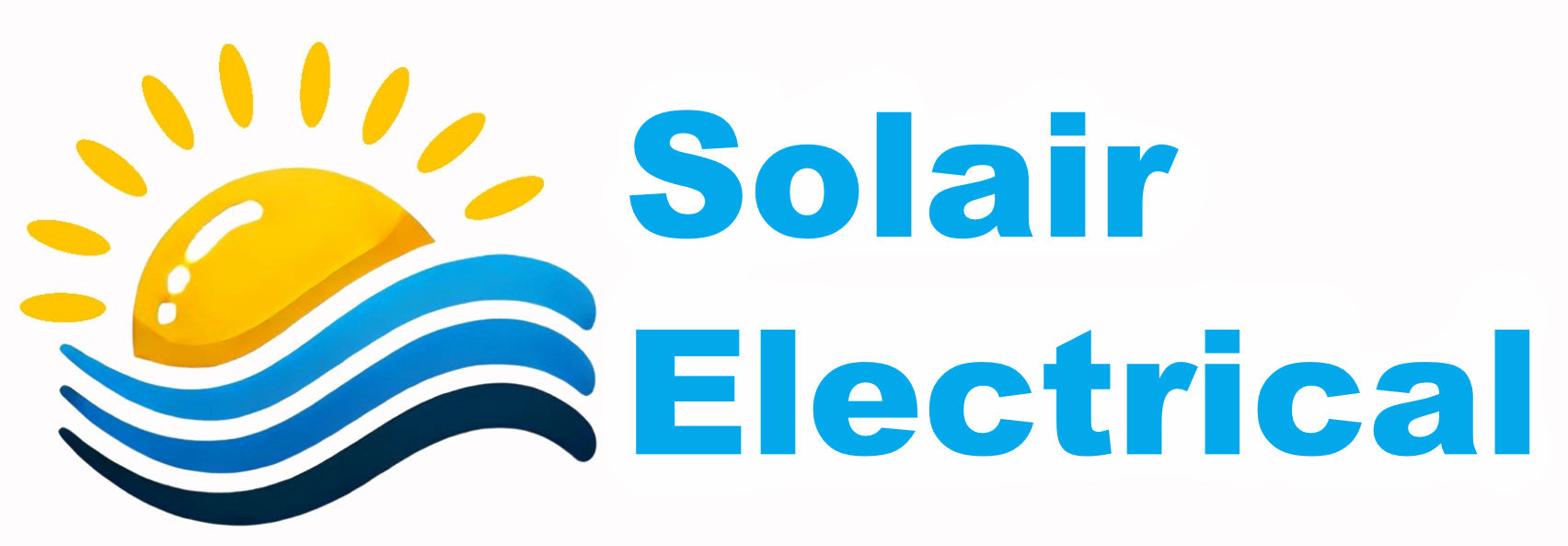Your solar inverter is the unsung hero of your solar power system. While the panels capture sunlight, it's the inverter that converts that energy into usable electricity for your home. When your solar inverter malfunctions, it can compromise the performance of your entire solar system.
At Solair Electrical, we specialise in diagnosing and repairing solar inverter issues for homeowners across Brisbane, Redlands, Logan, Ipswich, and surrounding areas. This guide will walk you through the most common inverter problems, how to identify them, and what you can do to keep your system running smoothly.

What Is a Solar Inverter and Why Is It Important?
The solar inverter is the central component of your solar power system. It converts the direct current (DC) electricity generated by solar panels into alternating current (AC) electricity, which powers your lights, appliances, and devices.
There are several types of inverters:
- String inverters: Common in residential systems, one inverter connects to multiple panels.
- Microinverters: Installed on each panel, offering panel-level monitoring and efficiency.
- Hybrid inverters: Designed to work with battery storage, enabling off-grid capabilities or energy backup.
- Off-grid inverters: Used in standalone solar setups, often in remote or rural locations.
If your inverter fails, your solar system can’t produce usable power—even if your panels are working perfectly.

Signs Your Solar Inverter Needs Repairs
Knowing the symptoms of inverter problems helps you act before a small issue becomes a costly one. Common warning signs include:
1. No Power Output or Inverter Not Turning On
If your inverter display is blank or your system isn’t generating any energy, it could be caused by:
- Tripped circuit breakers
- Faulty DC isolators
- Loose or corroded wiring
- Internal component failure
These issues require a qualified technician to investigate and safely repair.

2. Frequent Shutdowns or Overheating
Inverters can overheat if installed in a location with poor ventilation or if dust and debris have built up inside the unit. This may result in:
- The inverter shutting down intermittently
- Poor performance on hot days
- Error messages related to temperature
Regular solar servicing can help prevent heat-related faults.
3. Flashing Lights or Fault Codes
Most inverters display an error code or indicator light when something is wrong. Each code corresponds to a specific problem, such as:
- Grid voltage issues
- DC input problems
- Earth faults or isolation faults
- Communication failures
Your inverter manual may help decode the message, but proper diagnosis should always be carried out by a licensed solar electrician.

4. Drop in Energy Production
If your electricity bills are suddenly higher or your solar monitoring app shows a drop in production, it may not be the panels at fault. Inverters that are struggling can silently underperform without fully failing. This makes regular checks essential.
Causes of Solar Inverter Problems
There are several reasons your inverter might experience faults, including:
- Age: Most inverters last between 10 to 15 years. If yours is nearing the end of its lifespan, faults are more likely.
- Poor installation: Cheap or incorrect installation practices lead to early failures.
- Environmental damage: Water ingress, dust, vermin, or excessive heat can all damage internal components.
- Manufacturer defects: Some inverter brands are known for reliability issues. Others may have been discontinued, making repairs harder or obsolete.

Troubleshooting Tips Before Calling a Technician
While some issues need professional help, here are a few steps you can take to troubleshoot:
- Check your switchboard for tripped breakers.
- Inspect the inverter display for error messages.
- Look at your solar monitoring app or online portal, if available, for fault alerts.
- Ensure the inverter is well-ventilated and not covered or blocked.
- Look for obvious signs of damage—burn marks, broken screens, or loose cabling.
If in doubt, always turn the system off following the shutdown procedure listed on your inverter or switchboard. Never open the inverter casing or attempt DIY repairs—solar equipment can carry dangerous voltage even when switched off.

Should You Repair or Replace Your Inverter?
When an inverter fails, the decision to repair or replace depends on:
- Warranty: If your inverter is still under manufacturer warranty, you may be eligible for a free replacement or service.
- Inverter age: Older inverters that are out of warranty may not be worth repairing, especially if parts are no longer available.
- System performance: If your inverter is underperforming or outdated, an upgrade to a more efficient model (such as a hybrid or battery-ready unit) could be a better long-term solution.
At Solair Electrical, we provide honest assessments and will never push you toward unnecessary upgrades. Our goal is to restore your system to peak performance in the most cost-effective way.

Preventative Maintenance Tips
Like any piece of equipment, your inverter benefits from regular servicing. Preventative maintenance can extend its lifespan and reduce the risk of failure. We recommend:
- A solar health check every 12 months
- Keeping the area around the inverter clean and dry
- Ensuring adequate ventilation and shade
- Cleaning your solar panels every 6–12 months
- Watching for alerts or drops in energy production
Solair Electrical offers professional solar repair services to ensure your entire system including the inverter, is operating safely and efficiently year-round.
Why Choose Solair Electrical?
Solair Electrical is a Brisbane-based business specialising in solar inverter repairs, solar servicing, and complete solar health checks. All our work is completed by qualified electricians with Clean Energy Council (SAA) accreditation.
When you call us, you speak directly to Allan, our experienced technician who will personally visit your property, assess your system, and provide tailored advice or repairs. No subcontractors, no upselling—just honest, expert help.


